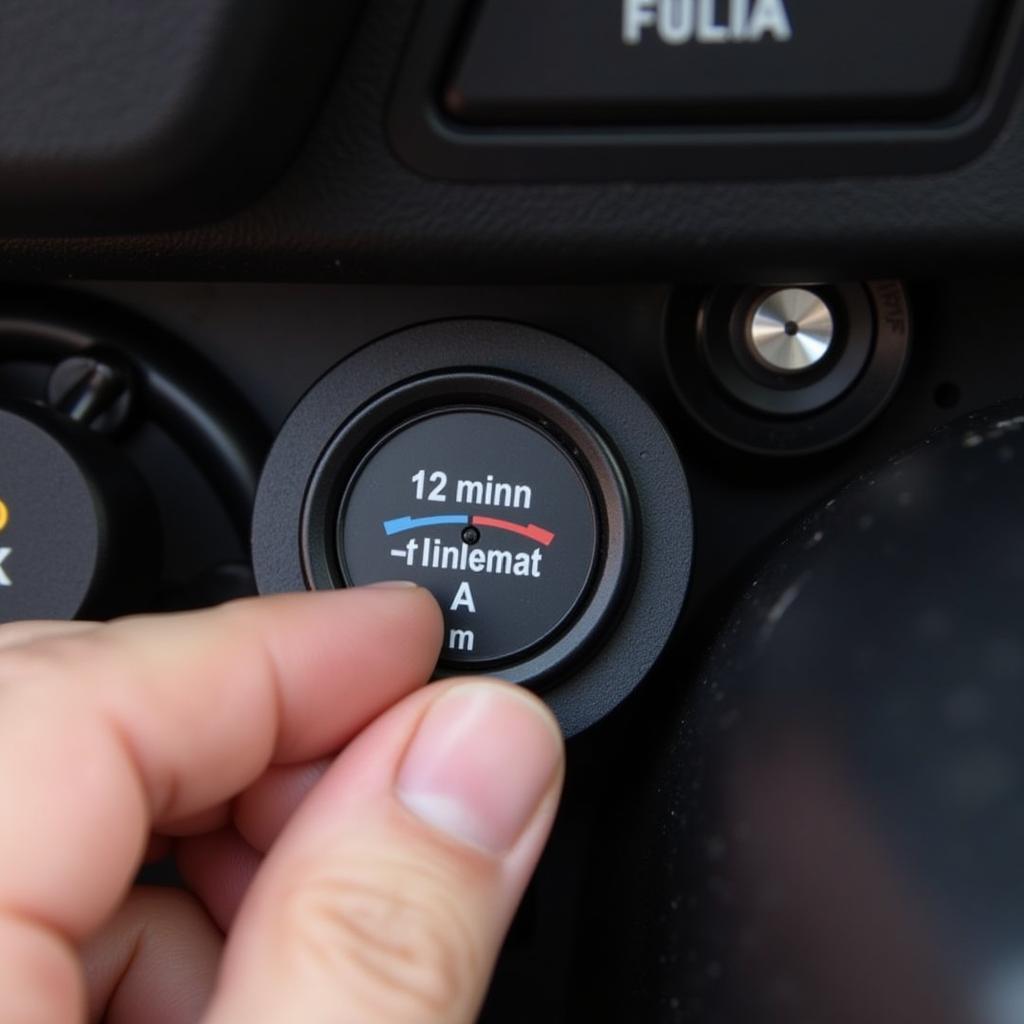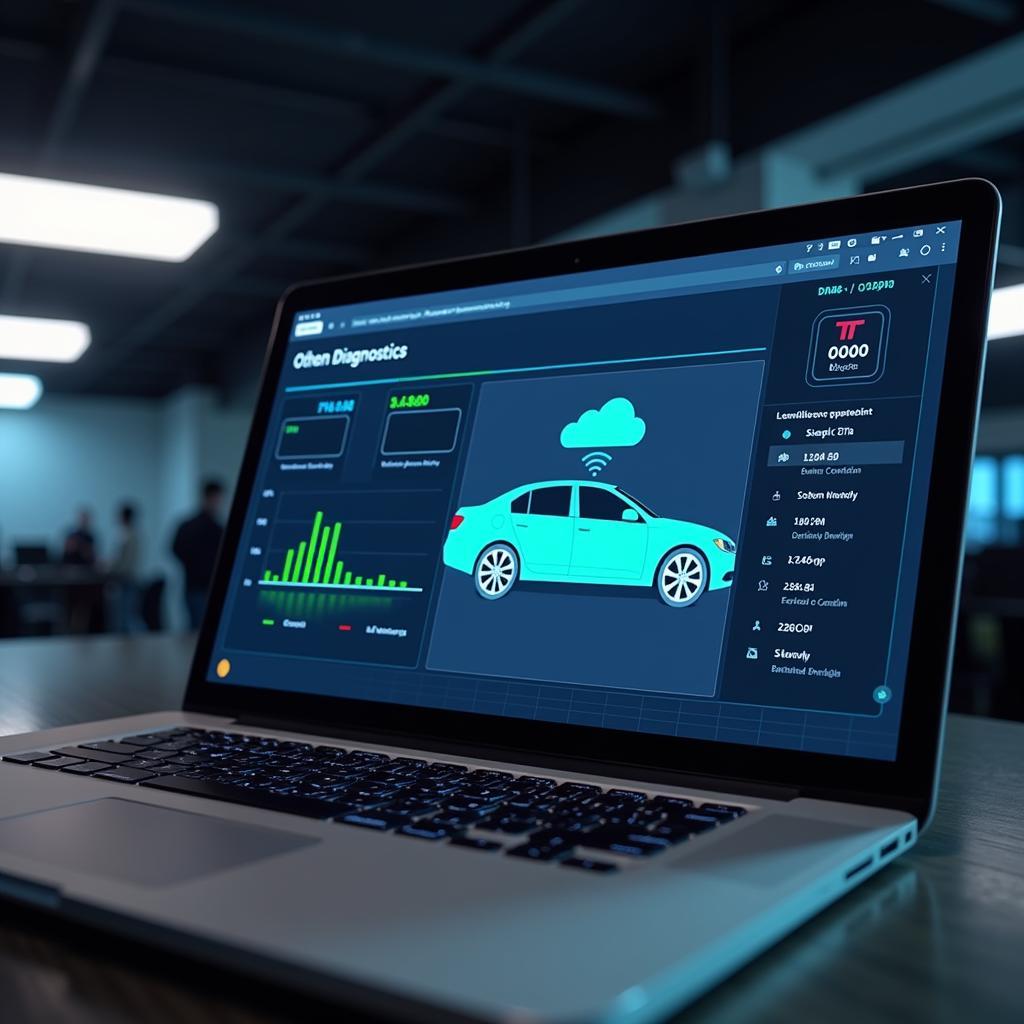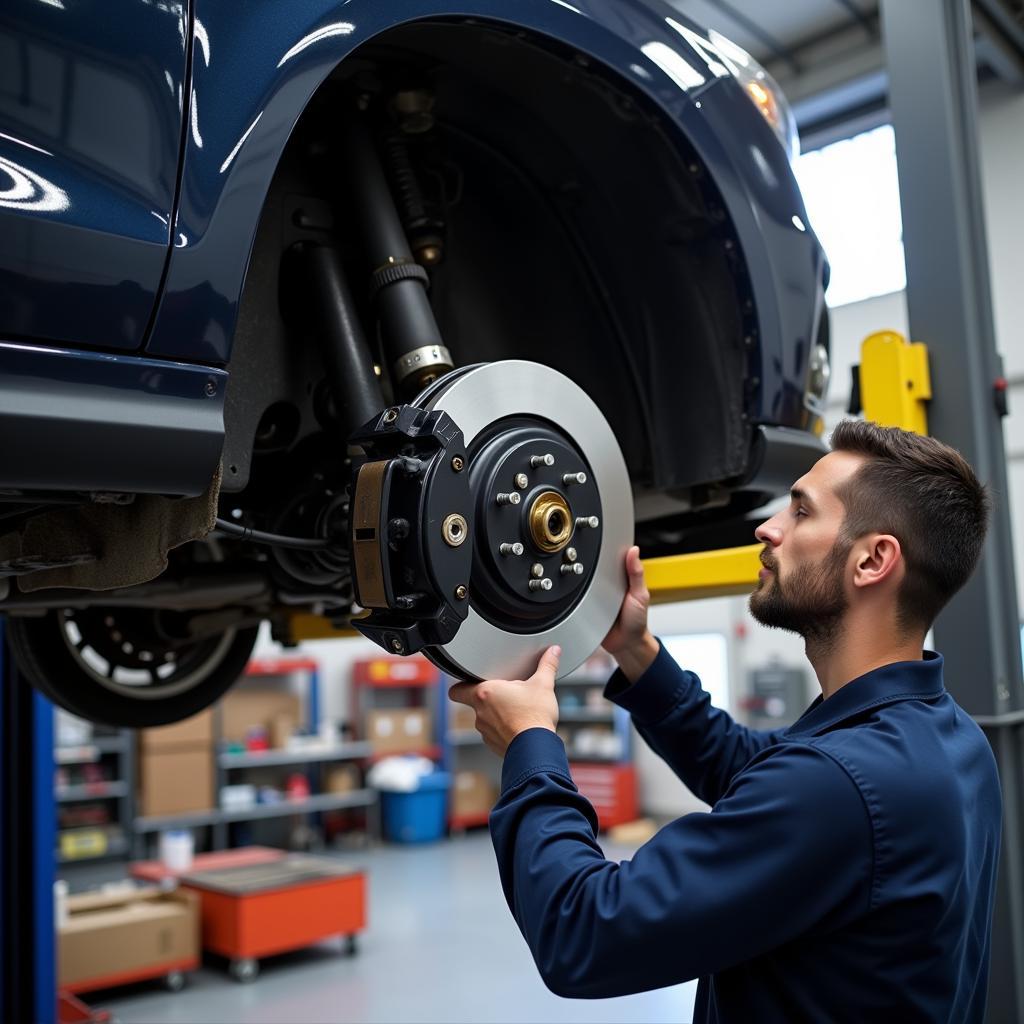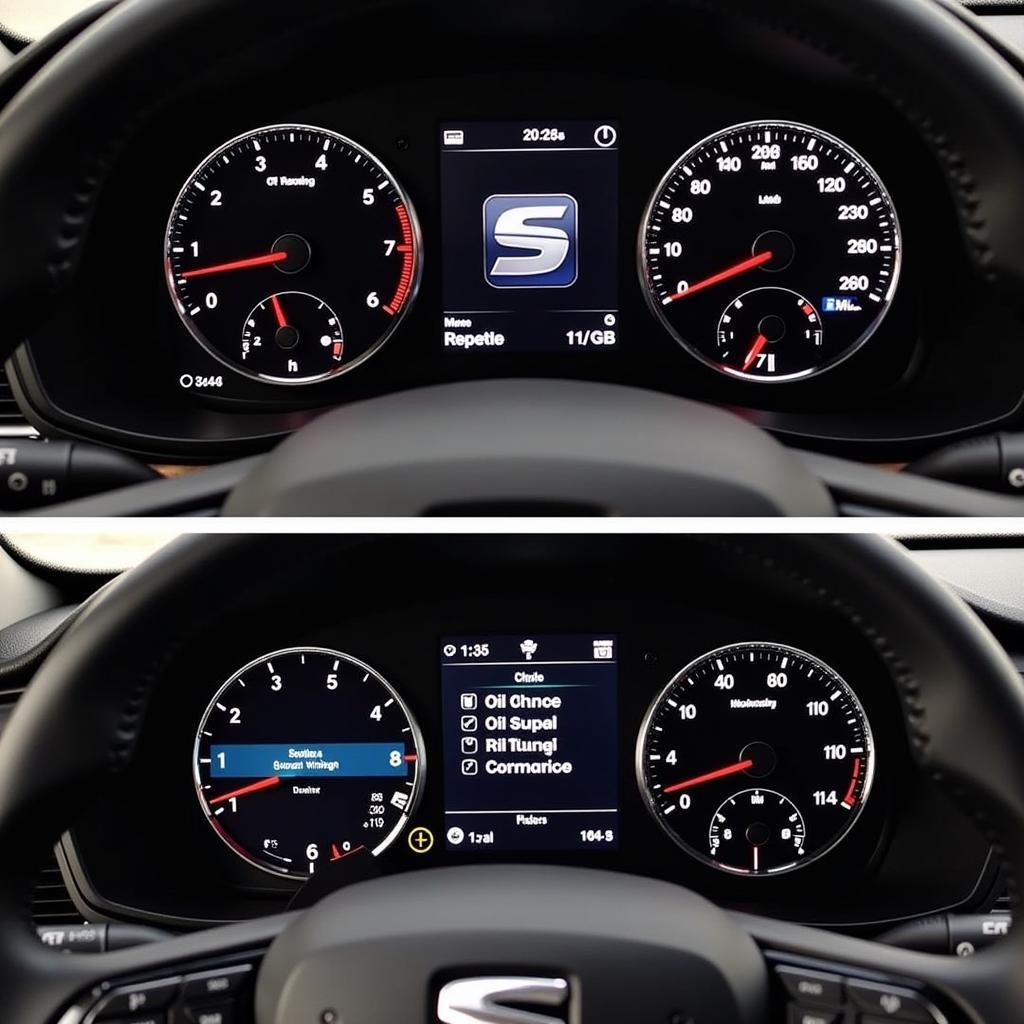A glowing brake warning light on your dashboard can be a nerve-wracking experience, but don’t panic! It’s a common issue with various potential causes, many of which you can diagnose and even fix yourself. This guide will walk you through understanding your brake warning light and what to do when it turns on.
Understanding Your Brake Warning Light
Your car’s brake warning light is a crucial part of your safety system. It’s designed to illuminate when it detects a problem with your braking system, urging you to address the issue promptly.
While the specific reasons can vary depending on the make and model of your vehicle, the most common culprits include:
- Low Brake Fluid: This is often the most likely cause. Brake fluid is essential for transmitting force from your brake pedal to the brake pads, and a leak or low fluid level can significantly impact braking performance.
- Worn Brake Pads: Brake pads have wear indicators that make a squealing sound when they become too thin. If you ignore this sound and continue driving, your brake warning light may illuminate.
- Faulty Brake Light Switch: The brake light switch activates your brake lights when you press the brake pedal. A malfunctioning switch can cause your brake lights and the warning light to malfunction.
- ABS Issue: Modern vehicles are equipped with Anti-lock Braking Systems (ABS). If there’s a problem with your ABS, a separate warning light might illuminate, or in some cases, your brake warning light might turn on.
- Other Brake System Problems: This could include issues with the master cylinder, brake lines, calipers, or other components. These issues often require professional diagnostics and repair.
What to Do When Your Brake Warning Light Comes On
1. Stop Safely: If your brake warning light comes on while driving, safely pull over to the side of the road as soon as possible.
2. Check Your Brake Fluid Level: Locate your brake fluid reservoir (refer to your owner’s manual) and visually inspect the fluid level. If it’s below the minimum mark, adding brake fluid might temporarily resolve the issue, but you should still have your braking system inspected by a professional for potential leaks.
3. Inspect Your Brake Pads: If possible, take a look at your brake pads through the spaces between your wheel spokes. If the pads appear significantly thin (less than ¼ inch of friction material), they likely need replacement.
 Checking brake fluid level
Checking brake fluid level
4. Consider Your Driving Conditions: Have you been driving in hilly or mountainous terrain that might have put extra strain on your brakes? Have you been heavily loaded or towing recently? These factors can contribute to brake wear.
5. Contact a Professional Mechanic: If you’re unable to identify the cause of the brake warning light or if you suspect a more serious issue, it’s crucial to contact a qualified mechanic immediately.
Remote Diagnostics and Software Solutions for Brake Issues
In today’s technologically advanced automotive landscape, remote diagnostics and software solutions play an increasingly important role in identifying and resolving brake system problems.
Remote Diagnostics: Many modern vehicles are equipped with telematics systems that can transmit vehicle data, including fault codes related to the braking system, to remote servers. Qualified technicians can then access this data, analyze it, and potentially identify the root cause of the problem without needing physical access to your car.
 Remote car diagnostics using a laptop
Remote car diagnostics using a laptop
Software Updates and Programming: Electronic control units (ECUs) manage various aspects of your car’s braking system, including ABS and electronic stability control. Occasionally, software glitches or outdated software versions in these ECUs can trigger warning lights or cause performance issues. In such cases, qualified technicians can use specialized equipment to install software updates or reprogram ECUs remotely, potentially resolving the issue without extensive mechanical intervention.
Benefits of Remote Solutions:
- Convenience: Remote diagnostics and software solutions offer convenience by eliminating the need to visit a repair shop for initial diagnosis or minor software-related fixes.
- Faster Resolution Times: Identifying issues remotely can significantly expedite the repair process, as technicians can be prepared with the necessary parts and information before you even bring your car in.
- Cost Savings: In some cases, remote solutions can help avoid unnecessary repairs or replacements by accurately pinpointing the root cause of the problem.
Preventing Future Brake Warning Lights
- Regular Maintenance: Adhering to your car manufacturer’s recommended maintenance schedule for brake fluid flushes, brake pad inspections, and overall brake system checks is crucial.
- Driving Habits: Avoid riding your brakes or engaging in aggressive driving that can accelerate brake wear.
- Pay Attention: Be mindful of any unusual noises (like squealing), vibrations, or changes in brake pedal feel, and address them promptly.
 Car brake system inspection during maintenance
Car brake system inspection during maintenance
FAQs
Q: Can I drive with the brake warning light on?
A: It’s strongly advised against driving with the brake warning light on. Doing so could compromise your safety and potentially lead to more severe damage.
Q: How much does it cost to fix a brake warning light issue?
A: The cost can vary significantly depending on the underlying cause. A simple brake fluid top-up might cost very little, while a complete brake system overhaul could be much more expensive.
Q: How often should I change my brake fluid?
A: Consult your owner’s manual for specific recommendations. Generally, it’s advisable to have your brake fluid flushed and replaced every 2-3 years or as recommended by your mechanic.
Q: Can a bad battery cause the brake warning light to come on?
A: While rare, a severely depleted battery can sometimes cause erratic behavior in various electrical systems, including the brake warning light. However, it’s essential to investigate other potential brake-related causes.
Q: My brake warning light is flashing. Is it serious?
A: A flashing brake warning light often indicates a more critical issue, potentially with the ABS system or a significant drop in brake fluid pressure. Seek professional assistance immediately.
Conclusion
Your car’s brake warning light is a crucial safety indicator that should never be ignored. While some potential causes, like low brake fluid, might seem like minor inconveniences, addressing any brake system issue promptly is essential for your safety and the well-being of your vehicle.
Remember, when it comes to your brakes, err on the side of caution and seek professional help if you’re unsure about the cause of the problem or your ability to address it safely. Regular maintenance, attentive driving habits, and prompt attention to any warning signs are your best defenses against unexpected and potentially dangerous brake failures.
For specific brake warning light issues on different car models, you can find more information on our website. We have detailed guides on problems such as a Rav4 brake warning light staying on, Ford Fusion Hybrid transmission shake and parking brake warning, or when a brake malfunction warning appears and the car won’t start. We also have guides on specific car models, such as the Volvo S70 brake warning light and the brake warning light staying on in a Dodge Caravan. Remember, your safety is our priority.

